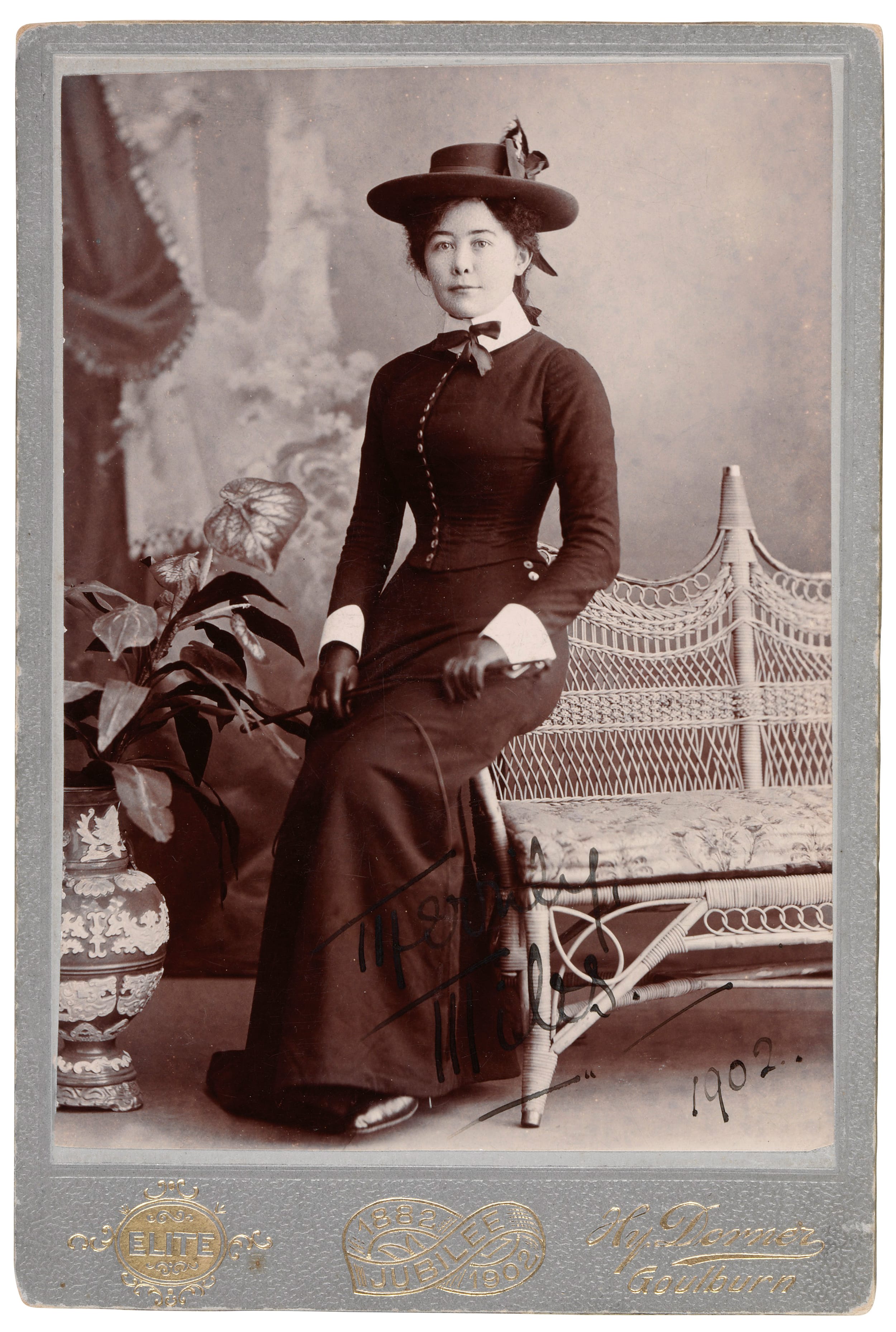
Galah's obituary writer Mark McGinness on the enduring literary legacy of Miles Franklin.
IN her classic novel, My Brilliant Career, Miles Franklin described the first memory of her heroine Sybylla Melvyn, at three: “I can remember the majestic gum-trees surrounding us, the sun glinting on their straight white trunks and falling on the gurgling fern-banked stream, which disappeared beneath a steep scrubby hill on our left.” More than half a century later and only a few years before her death at 74, in her memoir Childhood at Brindabella she wrote, “Heaven could be no more magical and mystical than unspoiled Australia.”
For all her dynamism and complexity, for all the years spent living in Chicago, Macedonia, London and Sydney, Franklin—nationalist, feminist and novelist—never forgot her beloved country, returning to it again and again in her writing.
Stella Maria Sarah Miles Franklin was born to Susannah (née Lampe) and John Maurice Franklin on 14 October 1879 at her maternal grandmother’s property at Talbingo, New South Wales. It lay two days on horseback from the valley in the Brindabella mountains where John’s father, Joseph Franklin, had bought squatting rights to Brindabella station and leased two adjoining runs, Bramina and Bin Bin, for his two sons. In this valley, in the Monaro district west of Canberra, they built their homesteads, ran cattle, and raised horses.
Miles spent the first 10 years of her life here, brought up on Shakespeare, the Bible, Dickens, and Aesop’s fables. But, as in Sybylla’s story, bad luck, bad seasons and her father’s fecklessness brought an end to the idyll. Those last words of Childhood at Brindabella—“Farewell happy childhood!”—signal exile from Eden and left her, suggested her early biographer Marjorie Barnard, in a state of “permanent homesickness”.
Professor Jill Roe, in her masterly, more recent life of Franklin, wrote that the girl was educated at home and later at Thornford Public School when her family moved to Stillwater, “an unrewarding small holding near Goulburn”. That sad, all-too-typical rural descent took them to a farm on the outskirts of Sydney and then finally, by 1915, they abandoned the land altogether for a modest existence in the south-west Sydney suburb of Carlton.

In the meantime, the precocious Franklin had produced her debut novel, My Brilliant Career, remembered still in one of the great Australian cinematic adaptations starring Judy Davis as Sybylla and Sam Neill as her thwarted beau, Harry Beecham. After numerous rejections from publishers, Franklin shortened her name to the gender-neutral “Miles” and her novel was published in 1901 with a foreword by Henry Lawson. It’s said she was annoyed that Lawson outed her as a young woman in his preface, though she remained a lifelong friend and staunch supporter of the bush poet. In 1902, Franklin wrote a sequel, My Career Goes Bung, though it didn’t appear in print until 1946.
In fact, as suggested by the sequel, her career never did quite take off. As Roe wrote, “My Brilliant Career made Miles Franklin’s name, but not her fortune.” She was never well off. Writing was squeezed into her spare time after her day job. Many of her works would go unpublished, almost all of her plays unperformed.